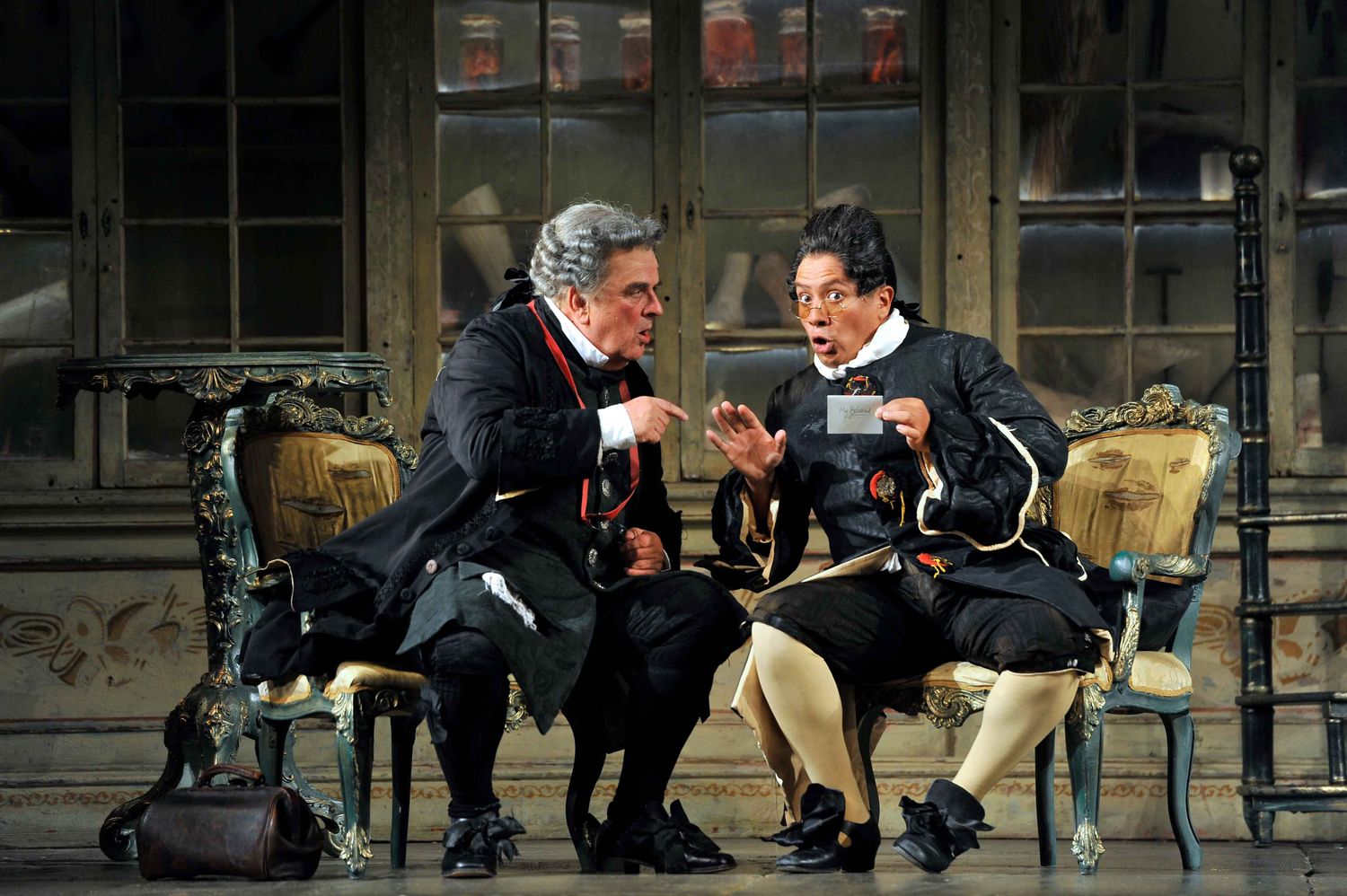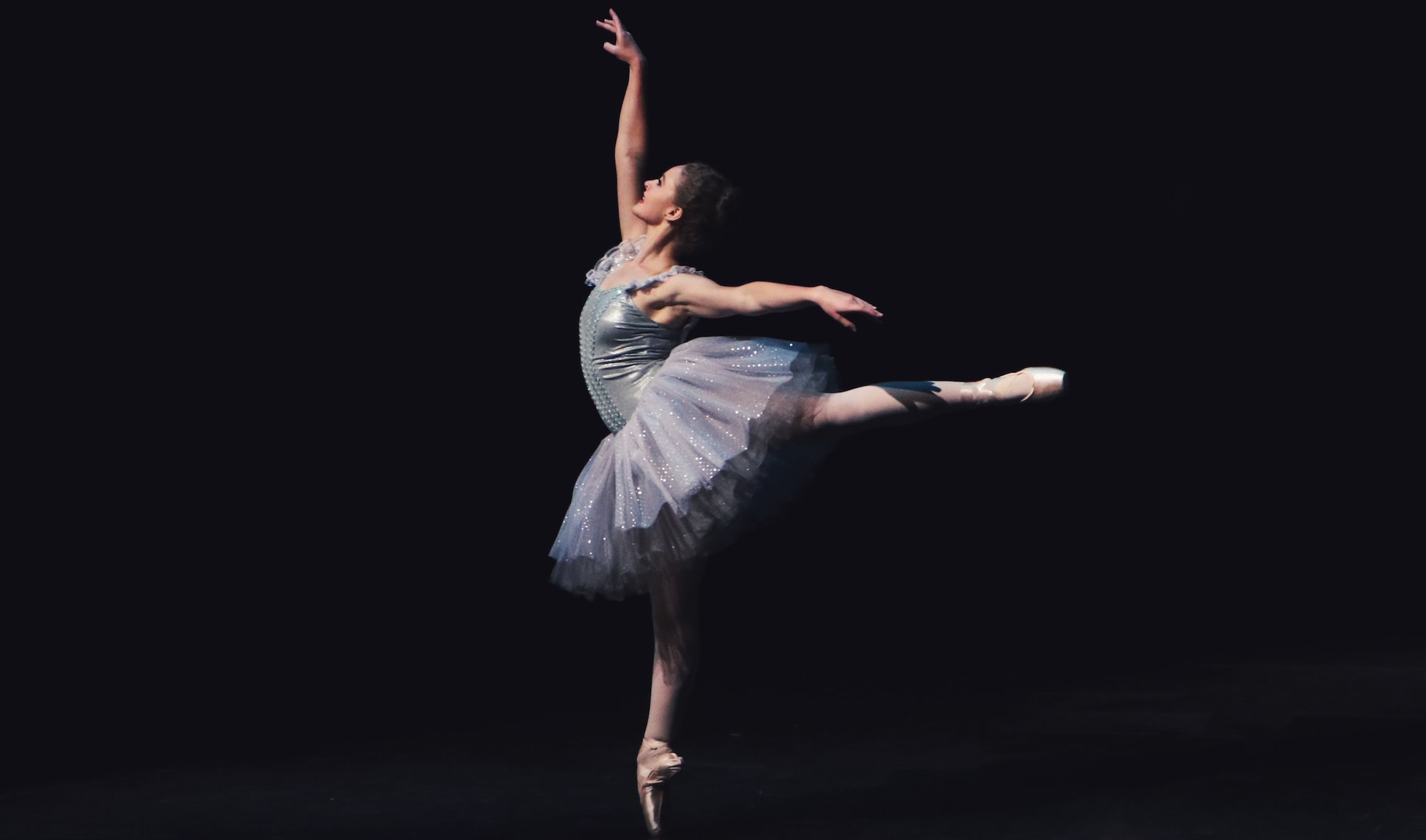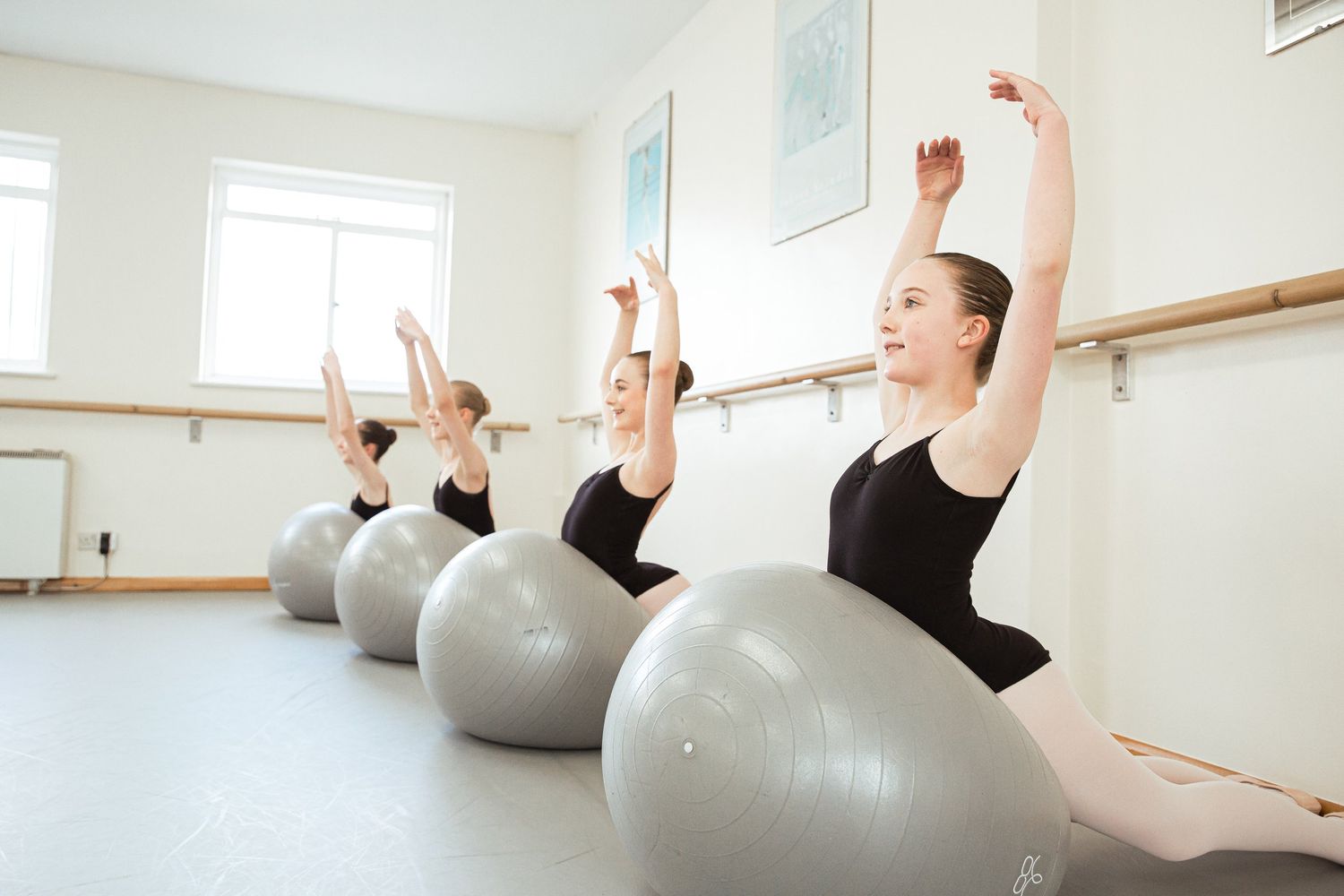Home>Events & Info>Ballet>What Is The Swan Lake Ballet About


Ballet
What Is The Swan Lake Ballet About
Published: January 7, 2024
Discover the enchanting story of the Swan Lake ballet, a timeless masterpiece that showcases the beauty and grace of ballet. Immerse yourself in this captivating tale of love, betrayal, and redemption.
(Many of the links in this article redirect to a specific reviewed product. Your purchase of these products through affiliate links helps to generate commission for AudioLover.com, at no extra cost. Learn more)
Table of Contents
Introduction
Ballet, with its graceful movements and captivating storytelling, has enchanted audiences for centuries. One of the most iconic and beloved ballets of all time is “Swan Lake.” Written by Pyotr Ilyich Tchaikovsky and first staged in 1877, “Swan Lake” has become a true masterpiece of the art form.
The ballet follows the story of Odette, a young princess who has been cursed by an evil sorcerer and transformed into a swan during the day. Only true love can break the curse, and Prince Siegfried becomes the key to saving Odette. However, deception, betrayal, and a battle between good and evil unfold as the story progresses.
Throughout the centuries, “Swan Lake” has been cherished for its beautiful music, intricate choreography, and emotional depth. It has mesmerized audiences across the globe, inspiring countless dancers, musicians, and art enthusiasts. In this article, we will dive into the origins of “Swan Lake,” explore the synopsis of the ballet, discuss its themes and symbolism, and examine its cultural impact.
Origin of Swan Lake
The origins of “Swan Lake” can be traced back to Russian folklore and a variety of sources that inspired its creation. The initial idea for the ballet was conceived by Vladimir Begichev and Vasily Geltser, two directors of the Moscow Imperial Theatres. They approached the renowned composer Pyotr Ilyich Tchaikovsky to bring their vision to life.
The libretto, or the story and text of the ballet, was written by Vladimir Begichev and his collaborator Vasily Geltser. Drawing inspiration from Russian and German folk tales, they crafted a narrative that would blend elements of romance, fantasy, and tragedy.
The music composed by Tchaikovsky is undoubtedly one of the most recognizable and captivating aspects of “Swan Lake.” Tchaikovsky’s score masterfully evokes the emotions and grandeur of the story, elevating the ballet to new heights.
When “Swan Lake” premiered on February 20, 1877, at the Bolshoi Theatre in Moscow, it was initially met with mixed reviews. Some critics found fault with certain aspects of the performance, including the choreography and the unconventional ending. However, over time, “Swan Lake” began to gain popularity and eventually became one of the most cherished and performed ballets in the world.
It is worth noting that “Swan Lake” has had several versions and variations throughout history. Notably, Marius Petipa and Lev Ivanov created the most influential version in 1895 for the Imperial Ballet of St. Petersburg. Their collaboration refined the choreography and made significant changes to the original libretto.
Today, “Swan Lake” continues to be performed by ballet companies worldwide, with each interpretation showcasing unique artistic choices while staying true to the heart of this enchanting story.
Synopsis of the Ballet
“Swan Lake” tells the hauntingly beautiful tale of Odette, a young princess who has been enchanted by the evil sorcerer Von Rothbart. Sworn to live as a swan by day and regain her human form only at night, Odette finds solace in the peacefulness of a lake. It is during one of these moonlit nights that she captures the attention of Prince Siegfried.
Act 1: The Royal Castle
The ballet opens in the royal castle, where Prince Siegfried is celebrating his coming of age. The Queen presents him with a crossbow as a symbol of his newfound responsibilities. She informs him that he must choose a bride at the upcoming royal ball.
Act 2: The Lakeside
Feeling overwhelmed by the pressure to find a bride, Prince Siegfried visits the lakeside where he encounters a flock of swans. As he is about to leave, he catches sight of Odette and is immediately captivated by her beauty. Odette reveals her true identity and explains that she and her fellow swans are under the spell of Von Rothbart. She tells the prince that true love is their only hope for breaking the curse.
Act 3: The Royal Ball
The royal ball begins in the grand halls of the castle. Various potential brides are presented to Prince Siegfried, but he is disinterested in all of them. Just as he is about to choose a bride out of obligation, Von Rothbart arrives with his daughter, Odile. Odile disguises herself as Odette, causing Prince Siegfried to believe he is pledging his love to her. Unbeknownst to him, Odette watches in despair.
Act 4: The Final Battle
Realizing the deception, Prince Siegfried rushes back to the lakeside to find Odette. He begs for her forgiveness and promises his unconditional love. Von Rothbart appears, seeking to keep the couple apart, and a climactic battle ensues. Prince Siegfried and Odette fight for their love, ultimately triumphing over Von Rothbart.
Act 5: The Happy Ending
After defeating Von Rothbart, Prince Siegfried and Odette embrace, breaking the curse cast upon her. Their love has proven strong enough to overcome all obstacles. The other swan maidens are also released from their enchantment, celebrating the victory of love and the restoration of their humanity.
“Swan Lake” is a poignant ballet that highlights the power of love, the struggle between good and evil, and the triumph of the human spirit. The beauty of the choreography and the emotional depth of the story make it a timeless masterpiece in the ballet repertoire.
Act 1: The Royal Castle
The first act of “Swan Lake” takes place in the grand halls of the royal castle, where Prince Siegfried is celebrating his coming of age. The scene is set with lavish decorations, elegant costumes, and the anticipation of the upcoming royal ball.
As the act begins, Prince Siegfried enters accompanied by his friends and courtiers. He is presented with a crossbow by the Queen, symbolizing his transition into adulthood and his future responsibilities as a ruler. The Queen reminds him that he must choose a bride at the royal ball to continue the family lineage and secure the future of the kingdom.
The atmosphere is filled with exuberance and excitement as the guests engage in lively dances and celebratory activities. However, Prince Siegfried feels a sense of unease and pressure to find the perfect bride. He longs for a deeper connection and love that transcends societal expectations.
Amidst the revelry, Prince Siegfried retreats to a secluded corner of the castle, contemplating his duties and desires. It is during this moment of solitude that he catches a glimpse of a flock of swans soaring through the night sky outside the windows.
Intrigued and drawn to the enchanting sight, Prince Siegfried follows the swans as they lead him to the lakeside outside the castle grounds. Little does he know that this encounter will awaken a life-altering journey of love and self-discovery.
Act 1 sets the stage for the emotional conflict that Prince Siegfried will face throughout the ballet. It introduces the expectations placed upon him by society and his yearning for a true and meaningful connection. The grandeur and opulence of the royal castle juxtapose the pent-up emotions and longing within the prince’s heart.
As Act 1 concludes, Prince Siegfried remains uncertain about his future, unaware of the transformative encounter that awaits him by the lakeside in Act 2.
Act 2: The Lakeside
Act 2 of “Swan Lake” takes us to the serene and mystical lakeside where the captivating and heartbreaking story of Princess Odette unfolds. This act showcases the ethereal beauty of the swans, the enchanting ambiance of the moonlit night, and the fateful meeting between Odette and Prince Siegfried.
As Prince Siegfried arrives at the lakeside, he is greeted by the sight of a flock of swans gracefully gliding across the water. Mesmerized by their elegance, he approaches the water’s edge, hoping to catch a closer glimpse of these magnificent creatures.
Suddenly, Odette, the transformed princess and lead swan, emerges from the lake. Her delicate movements and mournful presence immediately captivate the prince. Odette tells the prince about the curse that has transformed her and her companions into swans during the day, only to regain their human forms at night.
As Odette shares her tale, the prince feels a deep connection and compassion for her. He understands the profound loneliness and longing that she experiences, and a bond begins to form between them.
The music swells with melancholy as the two dancers perform a pas de deux, expressing their longing and empathy for each other. The choreography highlights the delicate movements of the swan, conveying the elegance and vulnerability of Odette, as well as the strength and devotion of Prince Siegfried.
Though their meeting is brief, it leaves an indelible mark on both Odette and Prince Siegfried. They feel an undeniable connection that transcends words and traditional societal expectations. They pledge their love and vow to find a way to break the curse that binds Odette to her swan form.
Act 2 of “Swan Lake” is a pivotal moment in the ballet, filled with both tender moments and underlying sorrow. It sets the foundation for the emotional journey that Odette and Prince Siegfried will undertake to overcome the obstacles that lie ahead. The lakeside becomes a symbol of hope and possibility, where true love has the potential to conquer all.
Act 3: The Royal Ball
The third act of “Swan Lake” transports us back to the opulent and bustling royal castle, where the grandeur is amplified for the highly anticipated royal ball. Act 3 showcases an intricate web of deception, misplaced love, and the ensuing tragedy that unfolds during this pivotal event.
As the guests arrive, the ballroom comes alive with vibrant colors, lavish costumes, and enchanting music. Prince Siegfried’s potential brides are presented one by one to the court, their beauty and grace on display for all to see.
However, amongst the guests, a sinister presence has arrived – Von Rothbart, the evil sorcerer who has cursed Odette and her fellow swans. Von Rothbart is accompanied by his daughter, Odile, who possesses a striking resemblance to Odette.
Odile’s entrance creates a stir among the crowd, and all eyes are drawn to her. Prince Siegfried is immediately captivated by her resemblance to Odette. Unbeknownst to him, Von Rothbart has cast a spell on Odile to impersonate Odette, tricking the prince into believing she is his true love.
The pas de deux between Prince Siegfried and Odile is a showcase of technical skill and seductive charm. Odile, dressed in black and embodying the seductive qualities of the black swan, artfully captivates the prince, leading him deeper into her deceptive web.
At the height of the grand ball, Prince Siegfried declares his love for Odile and is ready to pledge his eternal devotion. However, in a moment of realization and despair, Prince Siegfried locks eyes with the real Odette, who has just arrived in the midst of the confusion.
Heartbroken and devastated, Odette flees from the ballroom, and Prince Siegfried, now aware of the deception, pursues her. The atmosphere shifts from celebration to turmoil as the consequences of the mistaken love and Von Rothbart’s trickery become apparent.
Act 3 of “Swan Lake” showcases the devastating consequences of misplaced trust and the consequences of succumbing to superficial appearances. It highlights the struggles between love and deception, leaving the audience on the edge of their seats, eagerly anticipating the resolution of this tragic twist.
Act 4: The Final Battle
Act 4 of “Swan Lake” is a climactic and intense chapter in the ballet, as the characters face their ultimate challenges and the battle between good and evil reaches its peak.
Prince Siegfried is consumed by remorse and guilt for falling into Von Rothbart’s trap and betraying his love for Odette. Determined to make amends, he sets off to find Odette at the lakeside, seeking forgiveness and redemption.
As he arrives at the lakeside, a tense and dramatic atmosphere fills the air. The swan maidens, controlled by Von Rothbart, circle around Odette, creating an ominous and foreboding presence.
Von Rothbart appears and confronts Prince Siegfried, determined to maintain his power over Odette and prevent their reunion. The stage becomes the battleground for their emotional and physical struggle.
The pas de deux between Prince Siegfried and Von Rothbart represents their clash of wills and ideologies. Prince Siegfried fights with determination, driven by his love for Odette, while Von Rothbart retaliates with dark magic and cunning maneuvers.
During this intense battle, the unbreakable bond between Prince Siegfried and Odette becomes evident. They support each other, displaying strength and resilience as they stand together against the evil sorcerer.
As the struggle escalates, Prince Siegfried manages to overpower Von Rothbart, destroying his power and breaking his hold over the swan maidens. The curse is on the verge of being lifted, and hope begins to shimmer in the air.
Finally, Prince Siegfried and Odette are united in a powerful and emotional moment. Their love triumphs over the darkness, and they stand side by side, ready to face their final challenge: the resolution of the curse and the long-awaited happily-ever-after.
Act 4 of “Swan Lake” showcases the strength of love, the resilience of the human spirit, and the triumph of good over evil. The ballet reaches its peak of intensity, leaving the audience breathless as they witness the characters’ fates hanging in the balance.
Act 5: The Happy Ending
The final act of “Swan Lake” brings the culmination of the story, resolving the conflicts and bestowing a long-anticipated happy ending upon the characters and audience alike.
As Act 5 unfolds, the lakeside is transformed into a place of celebration and hope. The curse that had held Odette and her fellow swans captive is on the brink of being broken. The swan maidens gather around the couple, their presence symbolizing the collective journey toward freedom.
Prince Siegfried and Odette are determined to overcome the trials they have faced and the forces that tried to keep them apart. Together, they declare their love and unite as one against all odds.
With each step and movement, the ballet expresses the joy and triumph of true love prevailing. The swan maidens, who were once trapped in their avian forms, regain their human identities, celebrating their newfound freedom.
The climactic finale showcases a grand pas de deux between Prince Siegfried and Odette, allowing them to express the depth of their love and the redemption they have found. The music swells with a sense of grandeur and triumph, reflecting the emotional culmination of the entire ballet.
As the ballet concludes, the audience witnesses the transformation of the lakeside from a place of sorrow and struggle to one of celebration and happiness. The characters join in a joyful ensemble piece, showcasing the unity and harmony that has been restored.
The final moments of “Swan Lake” leave the audience with a sense of fulfillment and satisfaction. It is a reminder of the power of love to conquer all obstacles, the resilience of the human spirit, and the importance of staying true to one’s heart.
“Swan Lake” ends on a note of hope and the promise of a brighter future. It is a testament to the enduring popularity of the ballet, captivating audiences around the world with its timeless tale of love and triumph.
Themes and Symbolism
“Swan Lake” is not only a beautifully choreographed ballet but also a rich tapestry of themes and symbolism that add depth and layers to the storyline. Here are some of the prominent themes and symbols found in this timeless ballet:
1. Love and Sacrifice: At the heart of “Swan Lake” is the theme of love and sacrifice. Odette’s transformation into a swan and the curse she endures represent the sacrifices one must make for true love. Prince Siegfried’s unwavering devotion to Odette demonstrates the power of love and his willingness to give up everything for her.
2. Good versus Evil: The battle between Prince Siegfried and Von Rothbart symbolizes the eternal struggle between good and evil. Von Rothbart, the dark sorcerer, represents the forces that seek to corrupt and destroy love and happiness. The triumph of Prince Siegfried over Von Rothbart signifies the victory of goodness over malevolence.
3. Duality: The ballet explores the concept of duality through the characters of Odette and Odile. Odette, the white swan, represents purity, innocence, and true love, while Odile, the black swan, symbolizes deception, temptation, and betrayal. Their contrasting characteristics highlight the conflict between good and evil within the human heart.
4. Freedom and Imprisonment: The swan maidens’ enchantment represents the entrapment of the human spirit and the longing for freedom. The lakeside symbolizes the desire for liberation from the confines of societal expectations and constraints. Breaking free from the curse is not just the triumph of love but also a metaphor for breaking free from personal limitations.
5. Transformation and Redemption: “Swan Lake” explores the themes of transformation and redemption. Odette’s transformation from human to swan and back again represents the ability to overcome challenges and find redemption through love. The ending, where the swan maidens regain their human forms, symbolizes the hopeful transformation and rebirth of the characters.
6. Eternal Beauty: The swans in “Swan Lake” are symbolic of eternal beauty and grace. Their ethereal movements and serene presence evoke a sense of timeless beauty that transcends the physical world. The swans also represent the fragility and vulnerability that love encompasses.
These themes and symbols in “Swan Lake” contribute to its lasting impact and resonance with audiences. They convey messages of love, redemption, and the power of the human spirit, making the ballet a profound and emotive experience for all who witness it.
Cultural Impact
Since its premiere in 1877, “Swan Lake” has had an indelible impact on the world of ballet and the broader cultural landscape. It has become one of the most renowned and beloved ballets, capturing the hearts and imaginations of audiences across generations. Here are some of the notable cultural impacts of “Swan Lake”:
1. Enduring Popularity: “Swan Lake” remains one of the most frequently performed ballets worldwide. Its timeless story, captivating music by Tchaikovsky, and exquisite choreography continue to enchant audiences to this day. The ballet’s enduring popularity has solidified its status as a cornerstone of classical ballet repertoire.
2. Influence on Ballet Technique: The demanding choreography of “Swan Lake” has contributed to its influence on ballet technique. The graceful movements of the swan maidens, the intricate footwork, and the delicate pas de deux have inspired and challenged dancers for over a century. The ballet’s demanding nature has become a benchmark for technical skill and artistry in the ballet world.
3. Inspiring New Interpretations: “Swan Lake” has provided a foundation for countless interpretations by choreographers and dance companies. Each rendition offers a unique artistic perspective, while still capturing the essence of the timeless story. Choreographers approach the ballet with innovative ideas, pushing the boundaries of traditional ballet and introducing fresh perspectives to audiences across the globe.
4. Cultural Iconography: “Swan Lake” has permeated popular culture, becoming an iconic symbol in various art forms. It has inspired countless adaptations in film, theater, literature, and visual arts. References to “Swan Lake” can be found in literature, music, and fashion, solidifying its status as a cultural touchstone.
5. Bridging Artistic Disciplines: The music of “Swan Lake” has stood the test of time and has become a significant contribution to classical music. Tchaikovsky’s compositions for the ballet have been embraced beyond the realm of ballet, with the score being performed in concerts and recordings independent of the dance production. The music’s emotional depth and melodic beauty have made it a centrepiece of orchestral repertoire.
6. Influence on Literature and Popular Imagery: “Swan Lake” has influenced the literary world, inspiring numerous books and poems that explore themes of love, transformation, and tragedy. The imagery of the white and black swans has also become symbolic in various contexts, representing duality, inner conflicts, and the pursuit of beauty.
Through its lasting cultural impact, “Swan Lake” has not only enriched the world of ballet but has also touched the hearts and imaginations of people worldwide. Its timeless story, beautiful music, and captivating performances continue to inspire and resonate with audiences of all ages and backgrounds.
Conclusion
“Swan Lake” is a timeless masterpiece that has captivated audiences around the world for over a century. With its powerful storytelling, exquisite music, and enchanting choreography, this ballet continues to leave a lasting impact on the cultural landscape.
From its origins rooted in Russian folklore to its enduring popularity on stages worldwide, “Swan Lake” has touched the hearts and inspired the imaginations of countless individuals. Its themes of love, sacrifice, and the triumph of good over evil resonate deeply with audiences, evoking a range of emotions that transcend time and cultural boundaries.
Through its rich symbolism and intricate storytelling, “Swan Lake” explores universal themes that have connected with audiences since its inception. The ballet’s influence on ballet technique, its countless reinterpretations, and its permeation into popular culture have solidified its status as an iconic and enduring piece of art.
Furthermore, “Swan Lake” continues to serve as a testament to the power of ballet as an art form. Its demanding choreography challenges dancers to push their physical and artistic limits, inspiring excellence and innovation in the world of dance.
Whether experiencing the ballet for the first time or returning to it as a longtime admirer, “Swan Lake” transports audiences into a world of beauty, passion, and emotion. It invites us to reflect on the complexities of human nature, the power of love, and the resilience of the human spirit.
In conclusion, “Swan Lake” is a true masterpiece that has endured the test of time. Its captivating story, evocative music, and exquisite choreography have contributed to its profound cultural impact. Through its themes and symbolism, the ballet resonates with audiences on a deep and emotional level. As we continue to witness the enchantment and artistry of “Swan Lake,” we are reminded of the beauty and power of the performing arts to move, inspire, and transcend boundaries.











